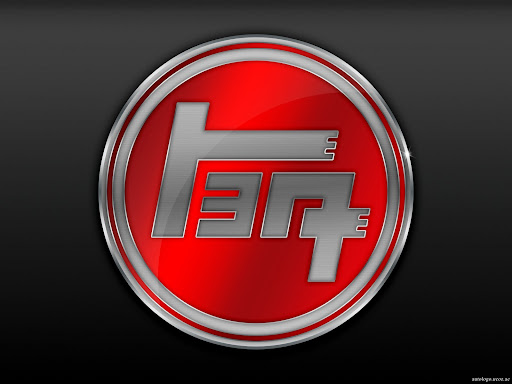There are various uses for katakana, it is not limited to English, or even foreign words (ゴム is eraser in spanish), but is also used for onomatopoeia (ピカーピカー, sparkle...), brand names (ウニコロ uniqlo), and emphasis on a product (トヨタ Toyota). What interested me the most about these uses was that katakana words were used for brand names or products that were native to Japan. For example, Toyota is ト ヨタ. See below.

I did some research into this discrepancy and I can suggest some reasons why this is true. I think the main reason to use katakana for Japanese products is advertising. For many people, katakana words stand out much more than the traditional Hiragana or Kanji words and this makes katakana more useful for advertisement and consumerism purposes. Katakana also gives a much more modern feel to the Toyoto logo, the streamlined katakana letters match up well with the streamlined mechanical lines of the cars. Even from my limited experience, when reading Japanese, my eyes are drawn to katakana. And also, Toyota, in Katakana, has 8 strokes. This is a lucky number in Japan and such cultural implications would likely interest a large, local company and be a strong incentive to use the ‘lucky’ word to induce people to buy their products.
This tactic of modernization of the logo for advertising purposes isn't just limited to Toyota. It seems many of the car companies in Japan use this technique to draw attention to their products. Another example is Mazda ( below)

This use of katakana in advertising Japanese products allows local companies to compete in the marketplace where foreign products are widely available and these foreign companies and brands are naturally written in katakana. The use of katakana for words that are generally written in Hiragana or Kanji draws attention to the brand and is another way to advertise the product. Furthermore, if we ignore the marks on ダ (I'm not sure how this is counted in Japan) than Mazda would also have 8 strokes; again a lucky number.
In addition to the modern feel and awareness of katakana words, the form of the letters, their straightness, could also draw attention. I think トヨタ is much more noticeable than とよた. This is in part because the traditional letters are smooth and artistic, and do not give the same urgent feel as the straight katakana letters. Another factor would be, from my limited knowledge of Japanese and Japanese culture, that sentence construction with hiragana letters means the letters are often just modifiers and sentence constructors. There is a study in psychology that shows that filler words can easily go unnoticed and that one's mind often simply skims over them. This is exemplified in a study where subjects are asked it there is anything wrong with the sentence below:
(The cat jumped
over a big yellow
ball and the
the dog barked)
The last "the" is repeated but many people don't even notice in that context. It seems that this might also be true about hiragana, especially for someone who grew up in a culture that used the letters mostly for modification. In contrast, the katakana words can be nouns, adjectives, or really anything they need to be. They are, by definition, new words and new ideas. Toyota or Mazda are not going to want people simply skimming over their brand name words which might be more likely if they just used in hirgana. Kanji words also do not seem as effective, because many people and place names are in kanji. Using katakana might prevent confusion with those names and locations; and again bring a more modern and ‘new’ feel to the words.
This idea of using katakana for advertisement is not limited to cars. Sony uses the phrase ソニー株式会社 to identify itself, the brand is in katakana,movie titles are in katakana and the Seiko Epson Company calls itselfセイコーエプソン株式会社, also with the brand name being in katakana. It seems this idea of advertising in 'modern' letters is now part of the popular culture in Japan.

